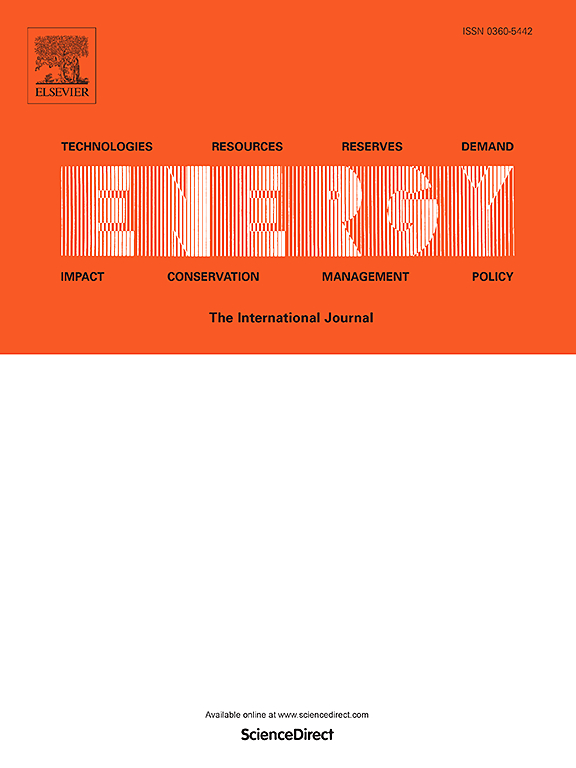Combined effects of yaw misalignment and inflow turbulence on tidal turbine wake development
IF 9
1区 工程技术
Q1 ENERGY & FUELS
引用次数: 0
Abstract
The development of wakes downstream of horizontal-axis tidal stream turbines is crucial because these devices, when installed in arrays, generate predictable renewable energy. Wake formation impacts both individual turbine performance and overall array efficiency, as upstream turbines can reduce the power output of downstream devices. Additionally, tidal flows are often asymmetric and vary in the predominant incoming flow angle over short time scales. This study presents methods and findings from a lab-scale experimental campaign that investigated wake structure under combined yaw and turbulent flow conditions. A 0.9 m lab-scale tidal turbine was tested under both low- and high-turbulence inflow conditions, with three yaw configurations: and a no-yaw case. A three-component laser Doppler velocimeter measured the downstream wake to characterise its structure. Under low turbulence, yawing slightly improved wake recovery. While most yaw cases showed wake skew, the centre-line progression of the wake was complex, influenced by constrained inflow characteristics. Some degree of self-similarity in the wake was observed, likely increasing with downstream distance. Analysis of wake turbulence revealed a complex picture. Turbulent kinetic energy was particularly high at the blade tips under yawed flow conditions. In the near to mid-wake region, turbulence length scales were smaller than the rotor plane. The return to isotropic conditions depended on inflow turbulence anisotropy, challenging common assumptions in computational turbulence models. These findings add to a more complex understanding of wake dynamics. The findings of this research suggest that optimisation of tidal devices and arrays utilising devices yawing and wake steering could be fruitful, however the limits of this lab-scale experiment in terms scale, blockage and ambient flow conditions mean that further work is needed.

求助全文
约1分钟内获得全文
求助全文
来源期刊

Energy
工程技术-能源与燃料
CiteScore
15.30
自引率
14.40%
发文量
0
审稿时长
14.2 weeks
期刊介绍:
Energy is a multidisciplinary, international journal that publishes research and analysis in the field of energy engineering. Our aim is to become a leading peer-reviewed platform and a trusted source of information for energy-related topics.
The journal covers a range of areas including mechanical engineering, thermal sciences, and energy analysis. We are particularly interested in research on energy modelling, prediction, integrated energy systems, planning, and management.
Additionally, we welcome papers on energy conservation, efficiency, biomass and bioenergy, renewable energy, electricity supply and demand, energy storage, buildings, and economic and policy issues. These topics should align with our broader multidisciplinary focus.
 求助内容:
求助内容: 应助结果提醒方式:
应助结果提醒方式:


